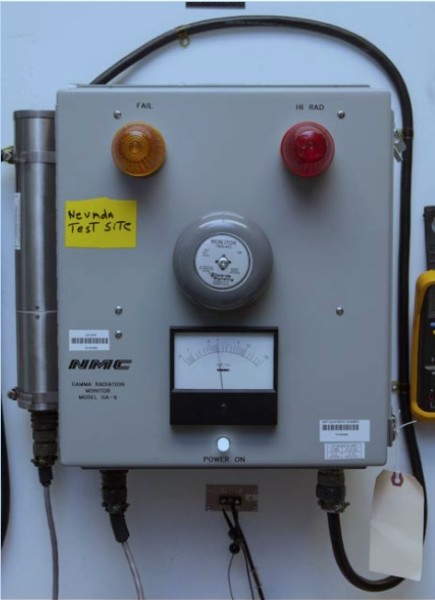Alarms designed to detect a nuclear criticality accident at the Y-12 National Security Complex have been tested, and the systems functioned appropriately and as required, the plant said in November.
Y-12 has had a criticality accident alarm system since 1945. A criticality accident would occur if there were an uncontrolled nuclear chain reaction. It could result in the release of radiation and significant exposures to nearby workers if the area were not immediately evacuated. It’s something that the plant takes steps to avoid. The alarms are designed to alert workers if there is an accident.
A nuclear criticality alarm at the 811-acre plant, which works on nuclear weapons components and stores highly enriched uranium, has been given credit for helping to save lives in a nuclear criticality accident in 1958. In that case, which was the first process criticality accident in the United States, Y-12 employees immediately evacuated when they heard the alarm.
A report published by Consolidated Nuclear Security, a federal contractor, said the basic design and electronic configuration of the older criticality alarm system installed in Y-12’s existing facilities, with the exception of the Highly Enriched Uranium Materials Facility, date back to 1957. The legacy system has received many upgrades since installation, and detector stations have been removed and relocated as enriched uranium operations have evolved, said the report, titled “Qualification of Y-12 Legacy Criticality Accident Alarm System Detectors.”
In a June 2016 report, the U.S. Department of Energy Office of Enterprise Assessments said the current detectors being used at Y-12 were purchased in the 1990s and supplemented with more detectors bought in the mid-2000s. In 2016, Y-12 had 51 criticality accident alarm system detector systems, with 36 deployed and 15 maintained in a calibration laboratory for possible deployment.
In a response to questions in November, Y-12 said there is a plan to modernize the criticality accident alarm system in several buildings in the next two to three years. That work will be funded as a project, and no cost data is available.
“Existing criticality accident alarm system components in facilities being modernized will be repurposed as ready-spares for continued operation of legacy facilities that will eventually be deactivated when the Uranium Processing Facility is operational,” Y-12 said.
The Uranium Processing Facility is expected to be complete by 2025. Work now done in some old buildings such as Building 9212 will move to UPF.
The system in the Highly Enriched Uranium Materials Facility, one of the plant’s newer buildings, was installed in 2010 when that facility began operations, Y-12 said.
The CNS report, which was published in August, said the legacy criticality accident alarm system, or CAAS, has multiple detector stations with gamma-sensitive Nuclear Materials Corporation GA-6 detectors. They provide a large area of accident coverage within enriched uranium facilities. If an alarm were set off, the signal would include an audible alarm and strobe lights.
All fissile material areas are within the range of at least two stations, according to a CNS presentation posted by the American Nuclear Society. Each CAAS station has a 400-foot coverage range, and the stations have two detectors each, the presentation said.
“Most nuclear facilities at Y-12 are equipped with multiple stations,” the CNS report said. “If the control relay circuit in at least one station generates an alarm signal, the CAAS alarm will annunciate through the entire facility and exterior to the facility. In some nuclear facilities that are in close proximity to one another, a station in one facility also provides accident coverage for portions of the adjacent facility. Therefore, the CAAS is configured to generate the alarm throughout all clustered facilities when at least one station produces an alarm signal.”
Y-12 purchased new detectors to replace failing detectors in 2005 and purchased a new component known as a photomultiplier tube (a PMT) for aging detectors in 2016. Two rounds of testing were performed on the alarm system detectors at the Nevada National Security Site in July 2017 and May 2018. The tests of two new detectors and four existing detectors with replacement PMTs subjected them to very intense and short-duration mixed neutron and gamma radiation fields at a close distance from a reactor, the CNS report said.
The detectors complied with requirements, said the report, written by Chris Haught, Chris Woodrow, and Troy McMillen. The presentation said the tests established confidence that the new detectors and existing detectors with new photomultiplier tubes would detect a minimum duration criticality accident and would tolerate maximum radiation.
The 2016 evaluation by the DOE Office of Enterprise Assessments reviewed the alarm system in buildings 9204-2E, 9212, 9215, and 9720-5. That assessment said the National Nuclear Security Administration Production Office was continuing to promote improvements in the criticality accident alarm system at Y-12 and working with CNS to finalize a strategy to replace the aging system in some longer-lived facilities and upgrade alarm system components for use in other shorter-lived facilities.
CNS is the contractor that manages Y-12 in Oak Ridge and the Pantex Plant in Texas for the National Nuclear Security Administration, which is part of the U.S. Department of Energy.
See the record of the CNS report published in August here.
See the report here.
See the CNS presentation on the legacy criticality accident alarm system here.
See the June 2016 report by the DOE Office of Enterprise Assessments here.
Read about the 1958 criticality accident here, here, here, here, and here. Read an interview with one of the eight workers exposed to radiation that June 16 here.
More information will be added as it becomes available.
Most news stories on Oak Ridge Today are free, brought to you by Oak Ridge Today with help from our advertisers, contributors, and subscribers. This is a free story. Thank you to our advertisers, contributors, and subscribers. You can see what we cover here.
Do you appreciate this story or our work in general? If so, please consider a monthly subscription to Oak Ridge Today. See our Subscribe page here. Thank you for reading Oak Ridge Today.
Copyright 2018 Oak Ridge Today. All rights reserved. This material may not be published, broadcast, rewritten, or redistributed.






Leave a Reply